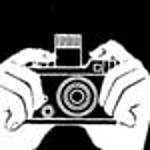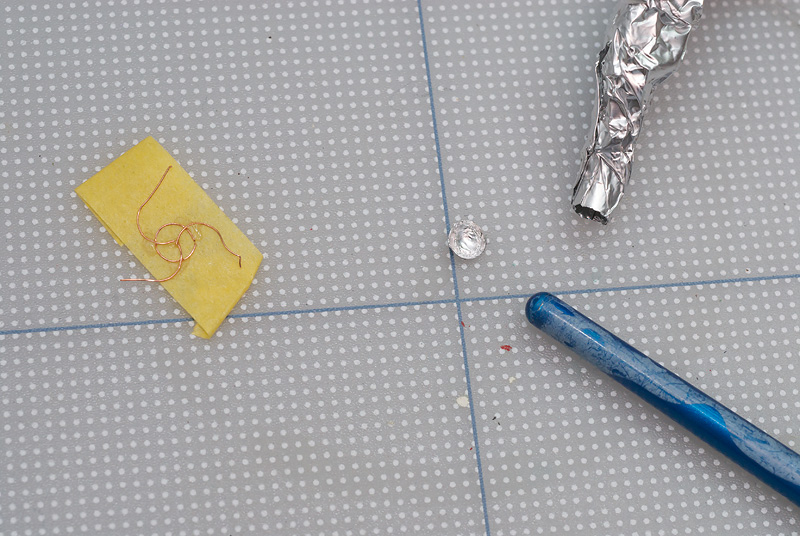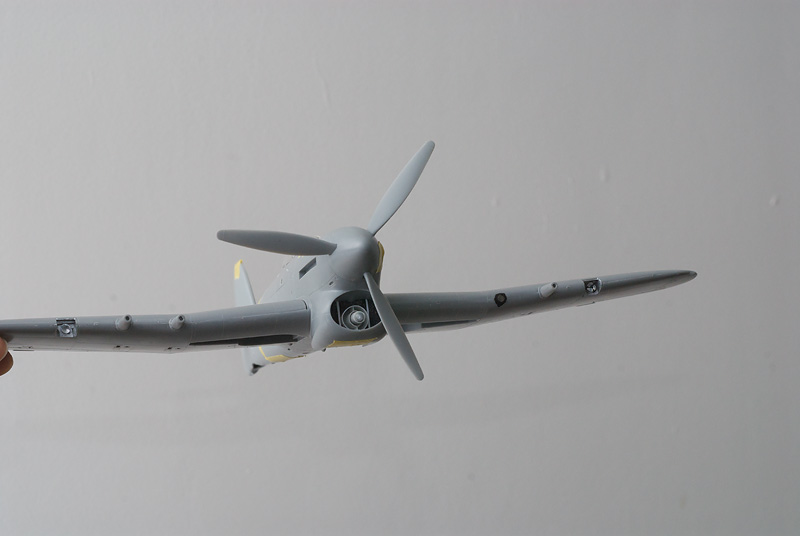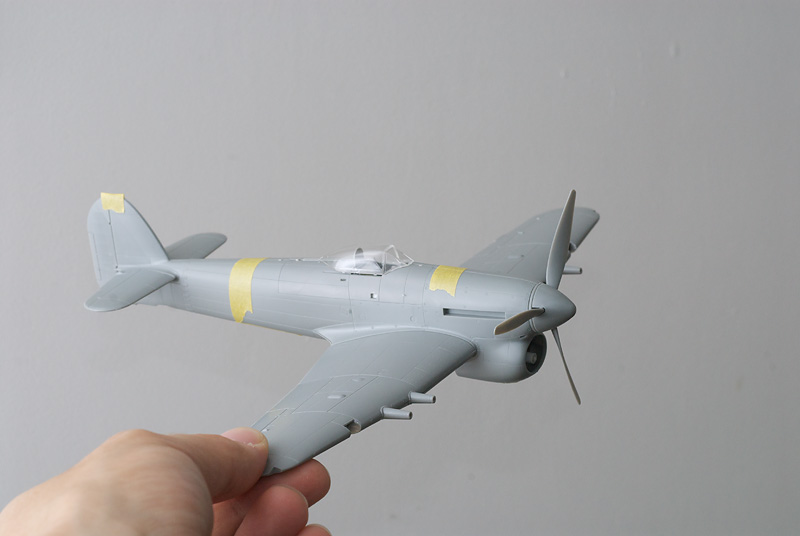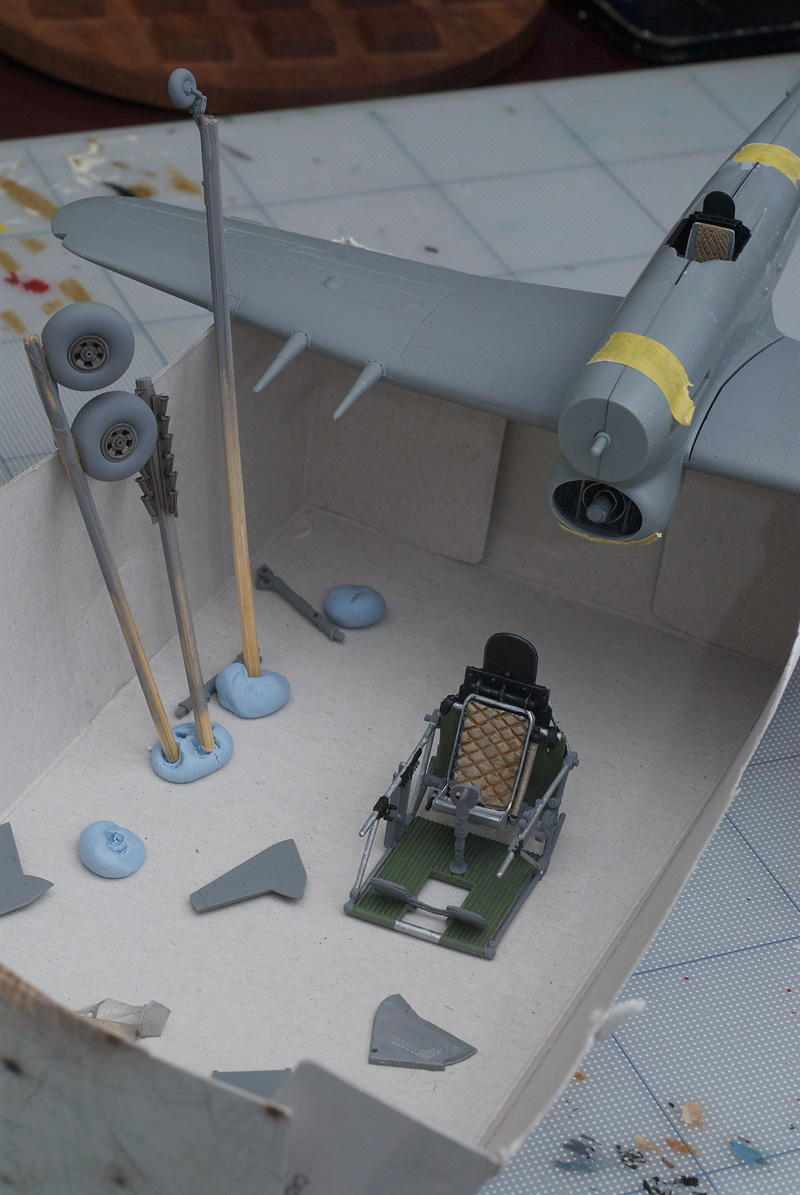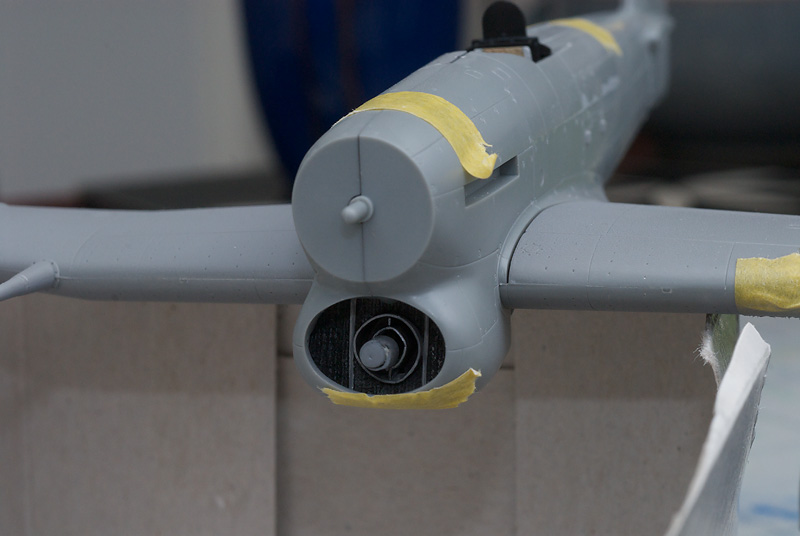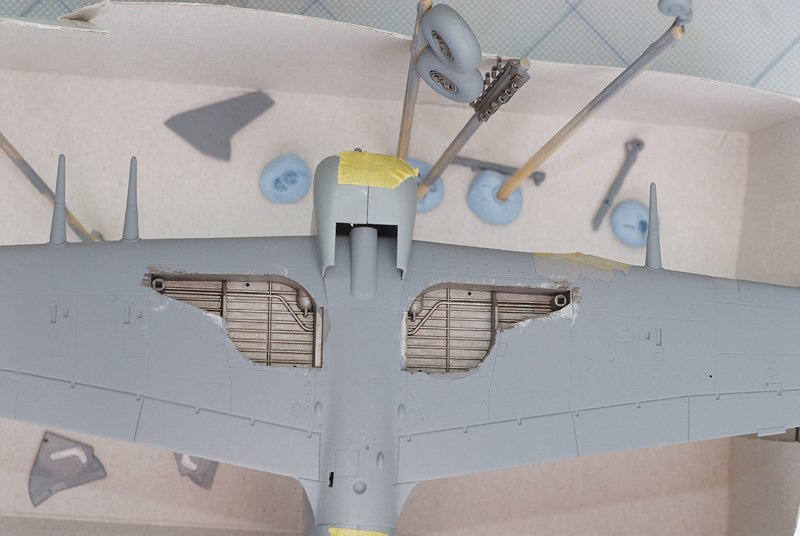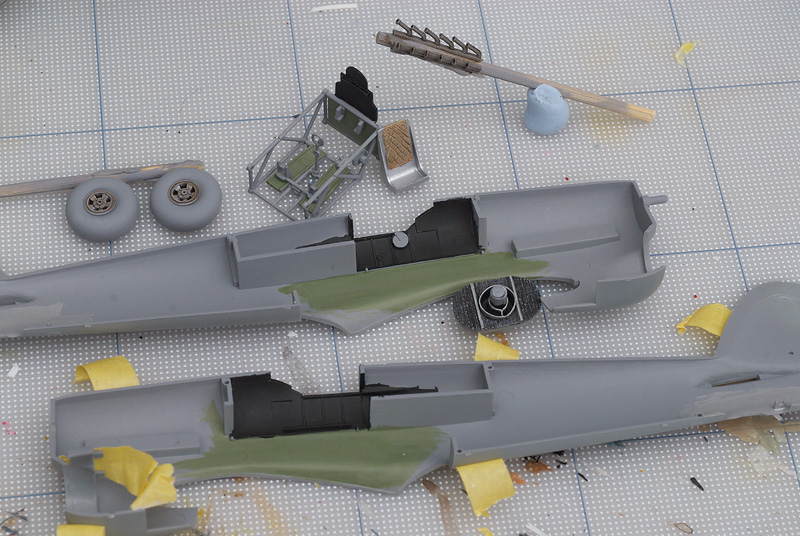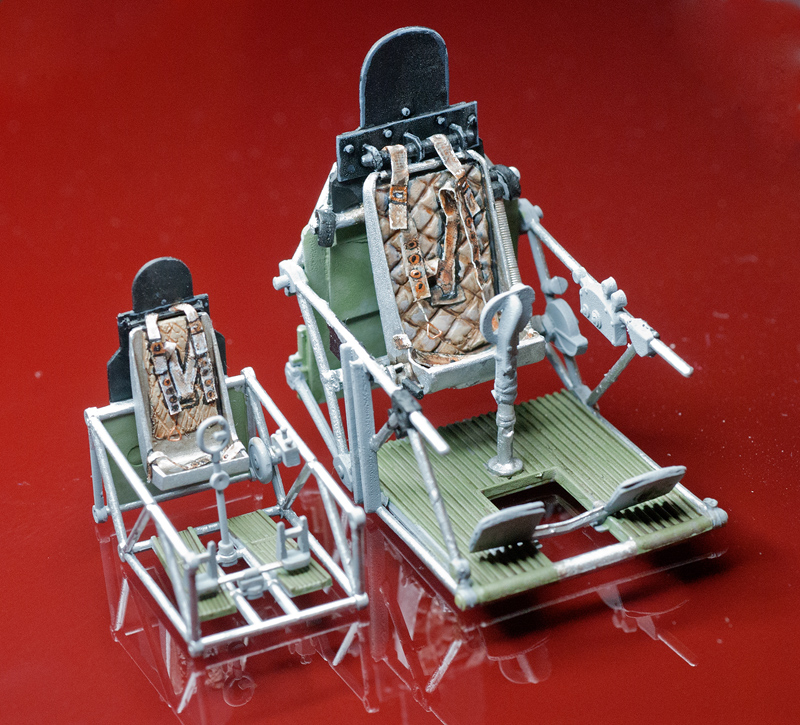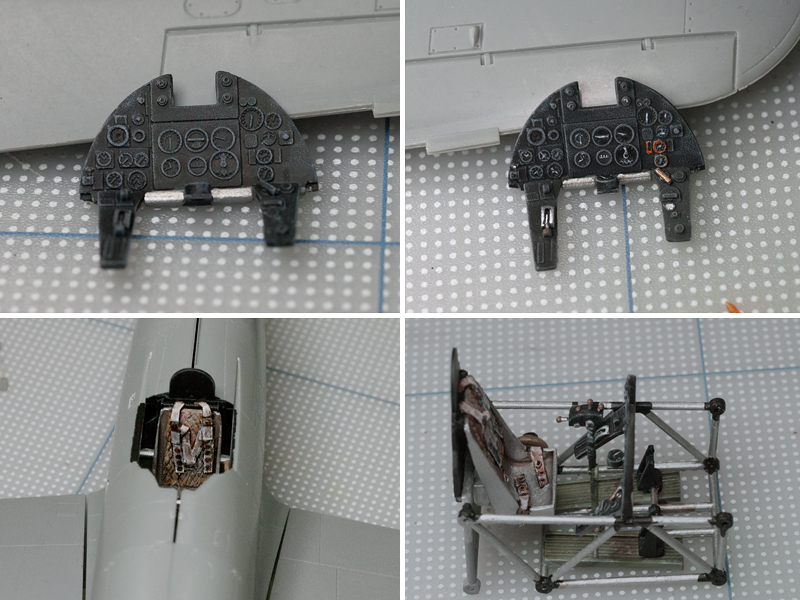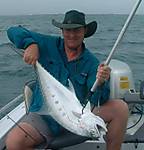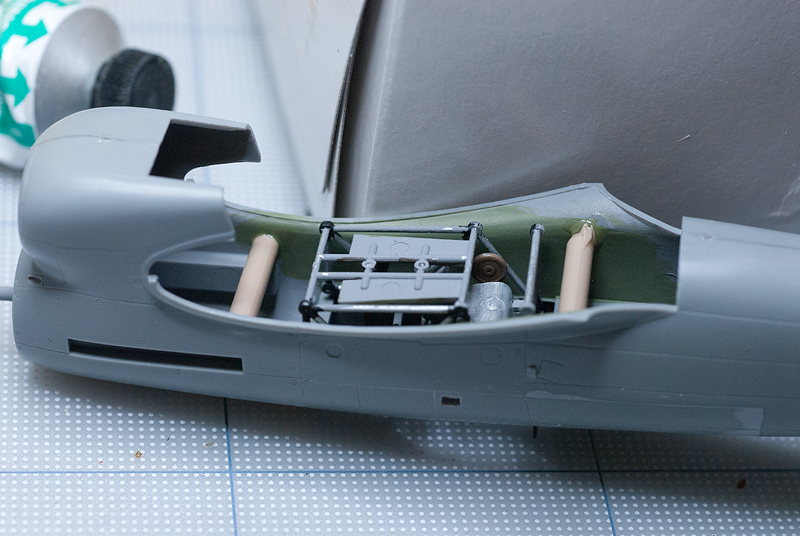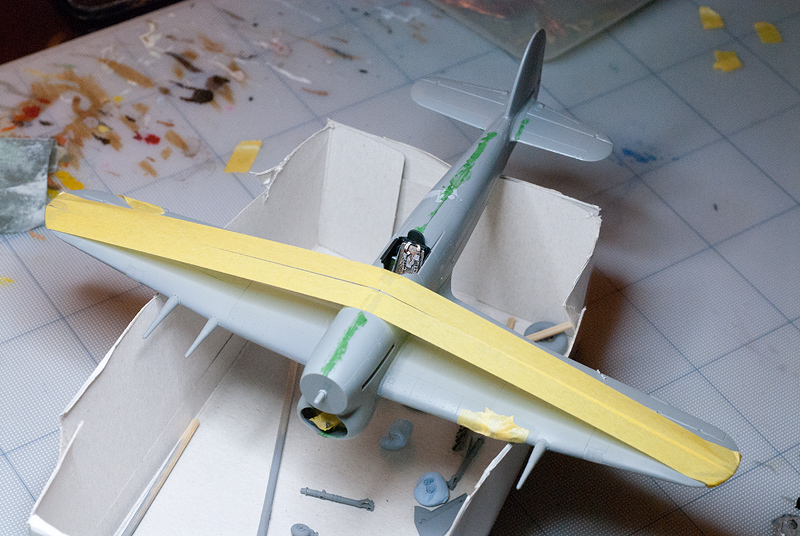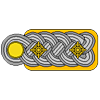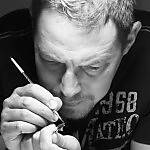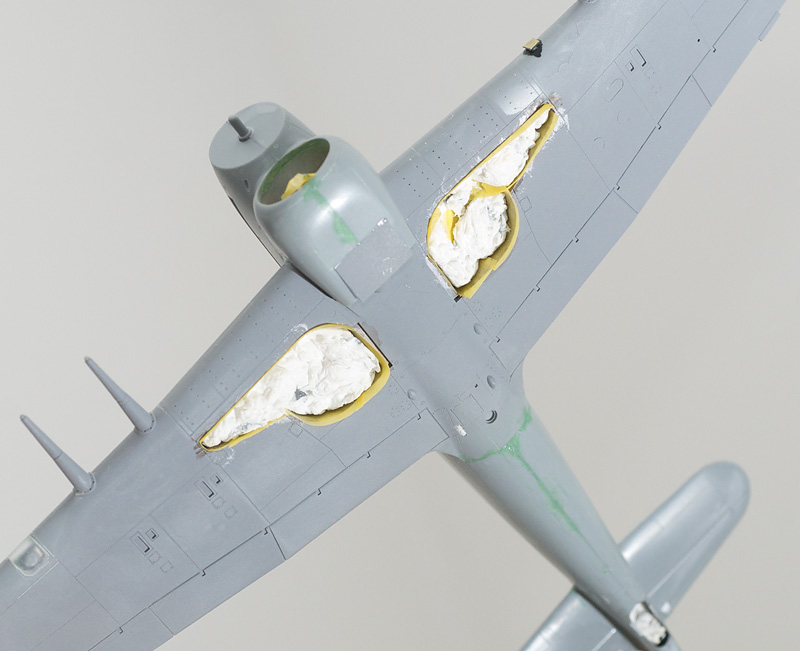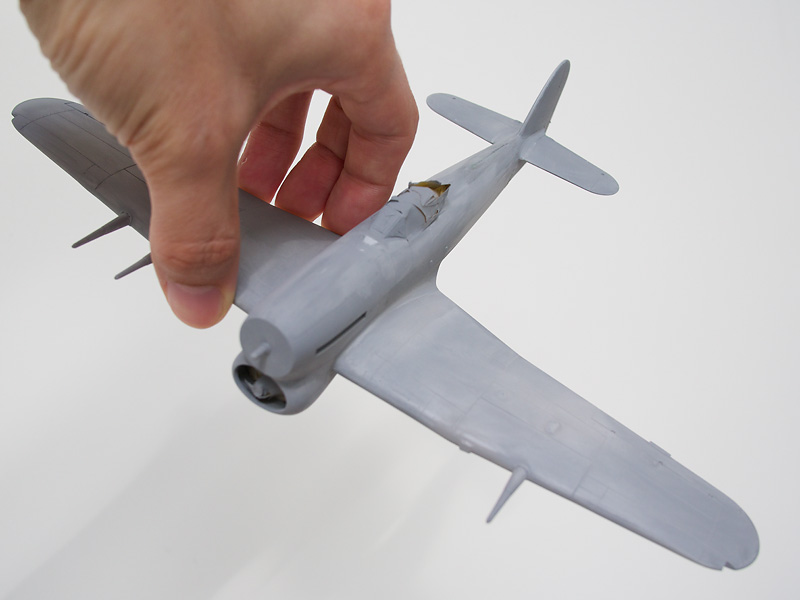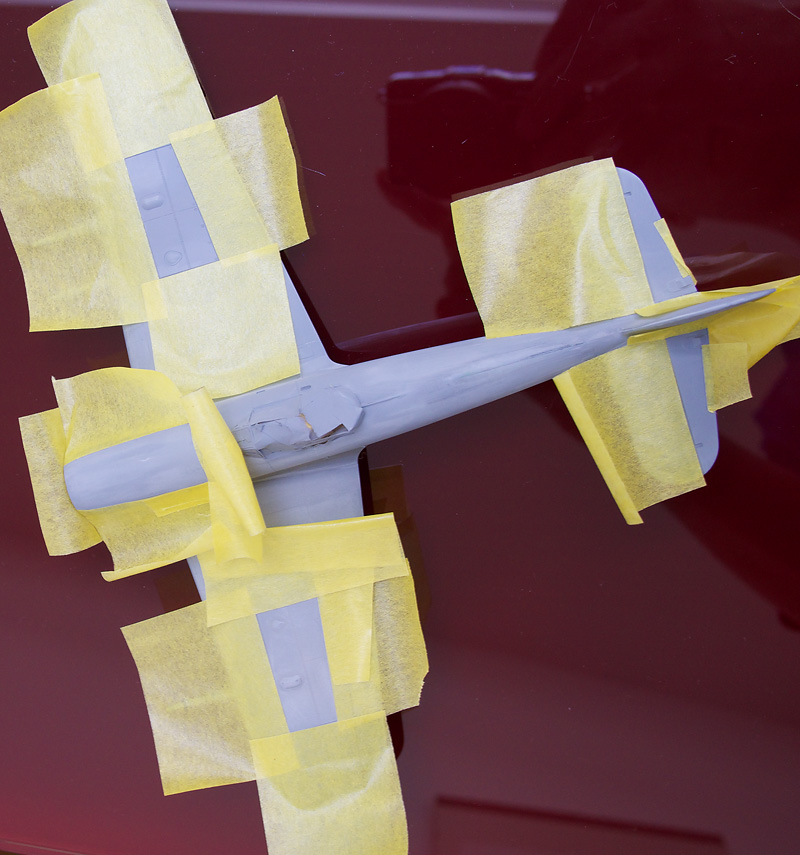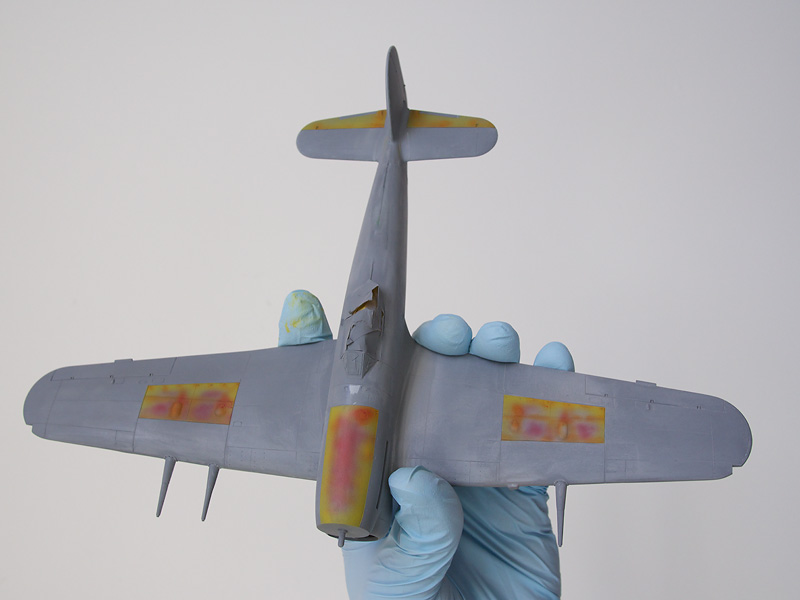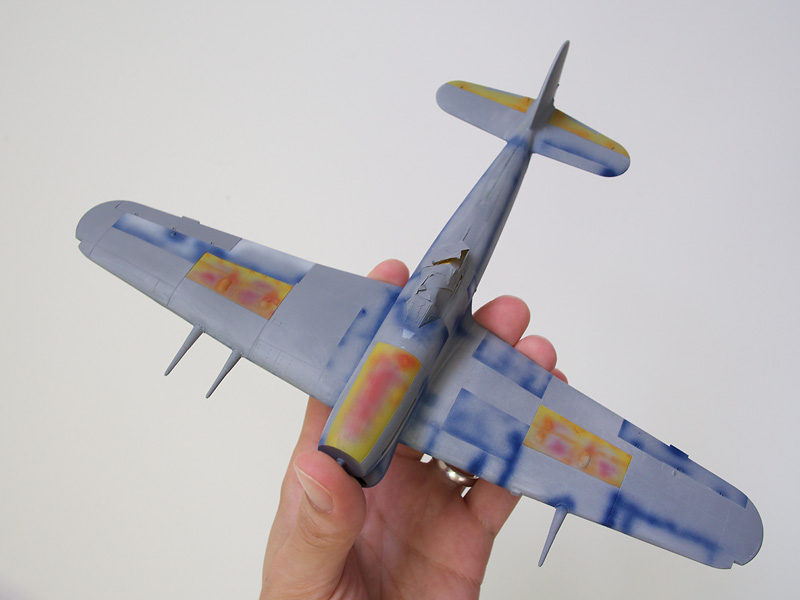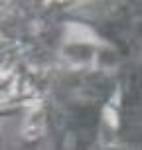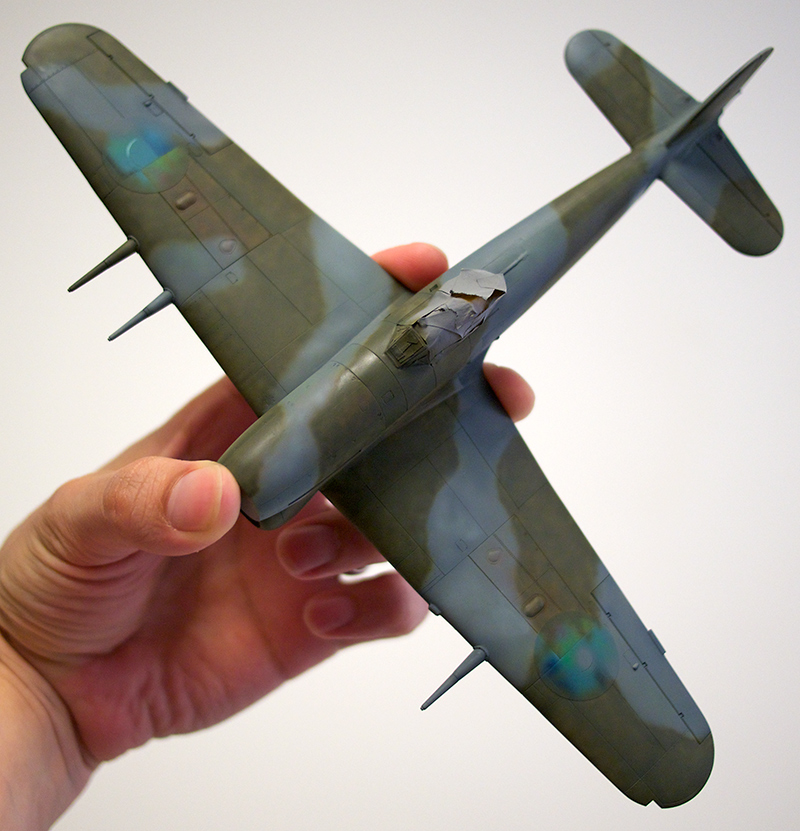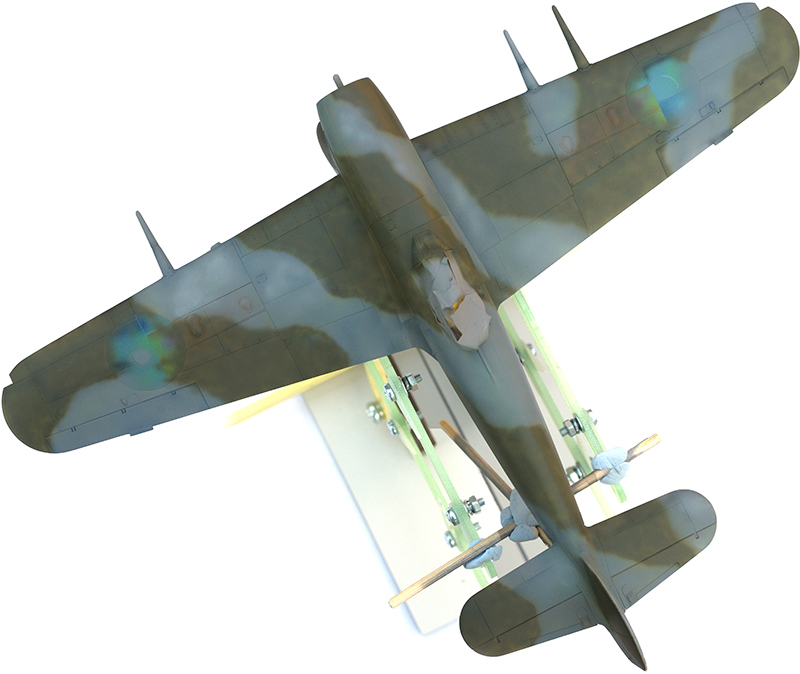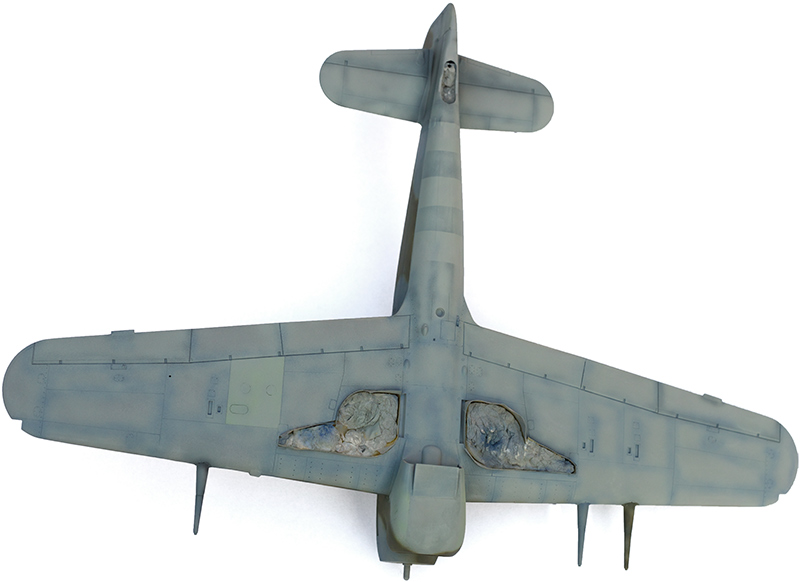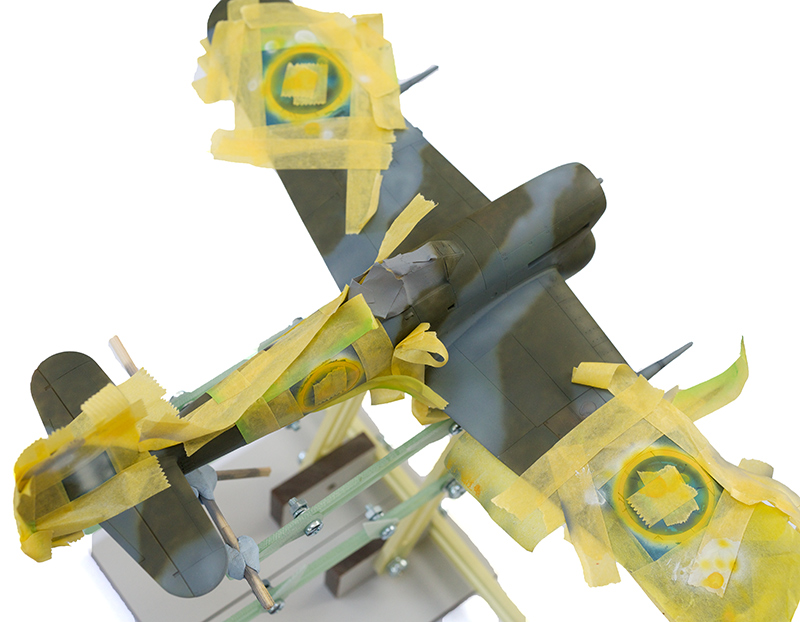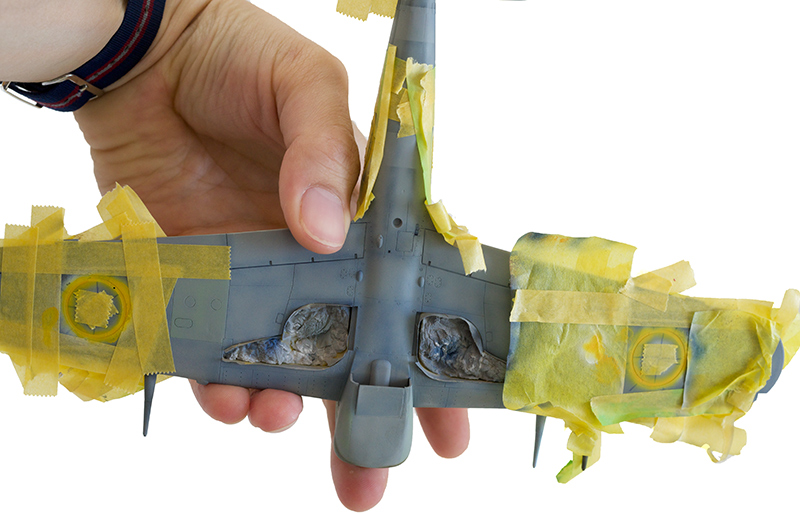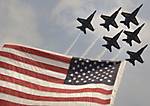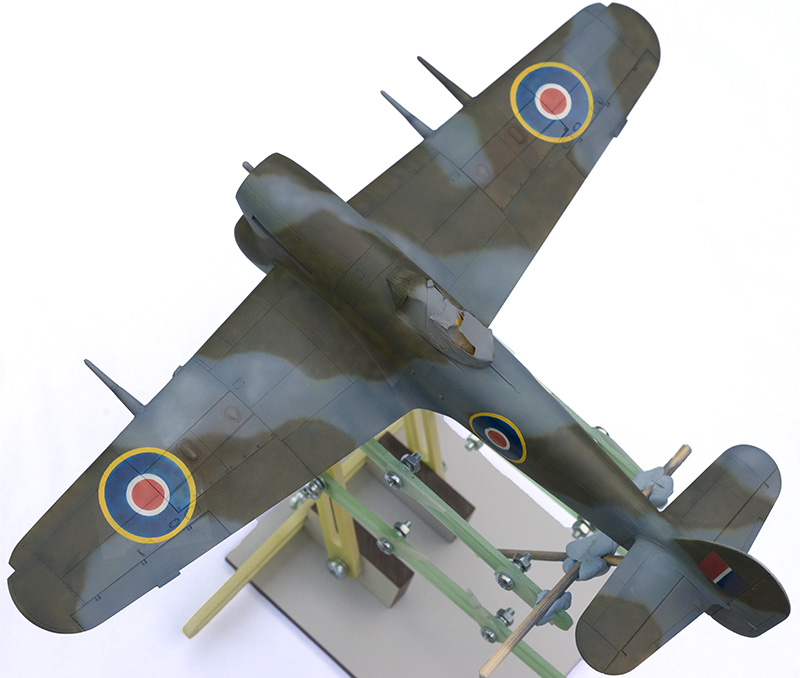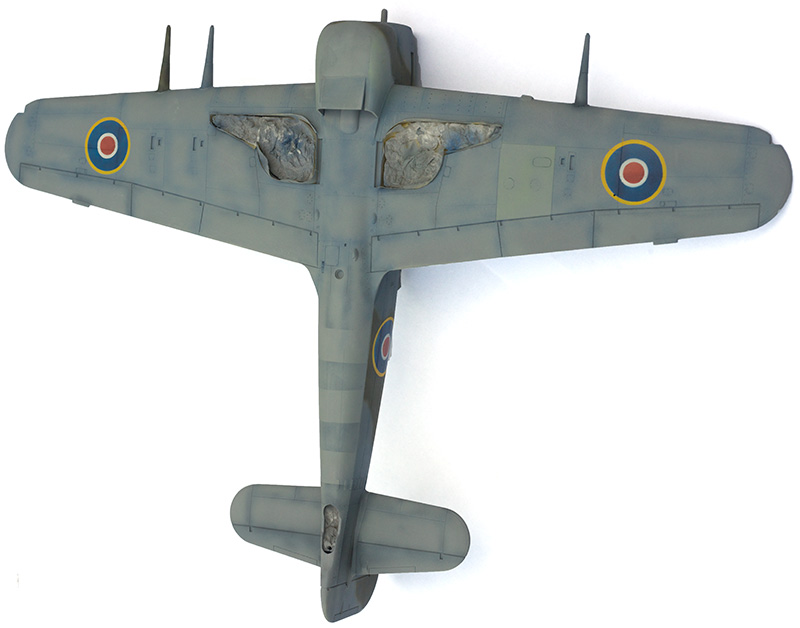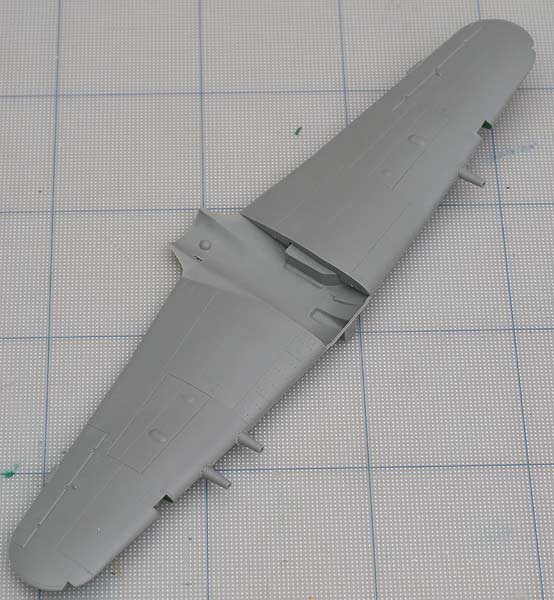
Notice anything missing?
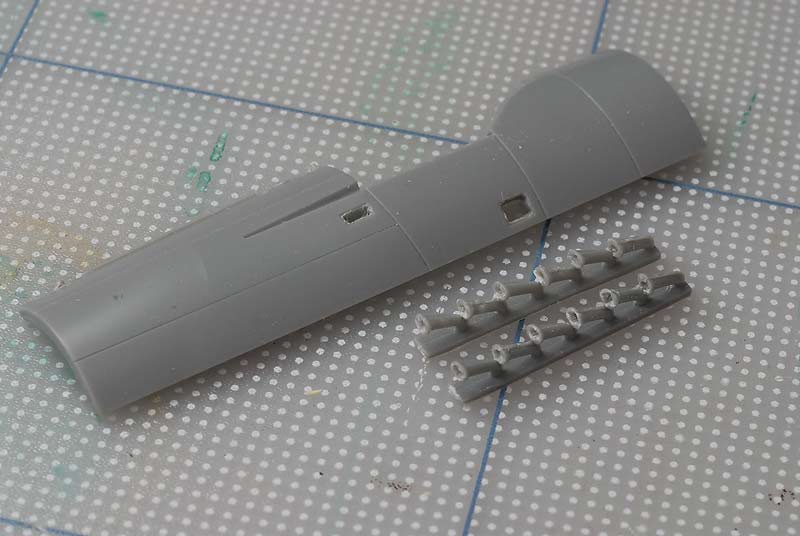
Quite fiddly and tedious– opening up the exhausts (note how Hasegwa has only moulded one exhaust entering each nozzle at the base– there should be two per nozzle).
Also opened the hand and foot holds in the starboard fuselage insert– these will have open covers made later.

Filling the inner port shell chutes (used miliput for the first round, as it scribes better than the green squadron putty).
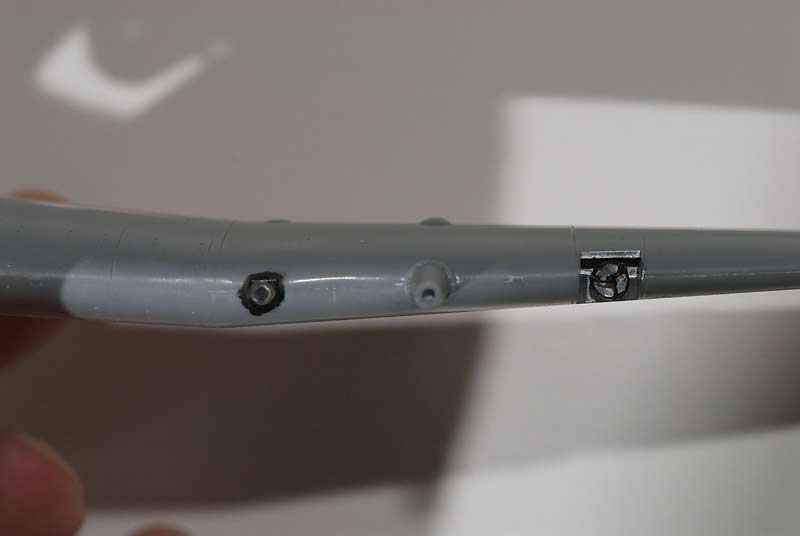
Added a landing light reflector made from foil (pushed over the rounded end of a paintbrush, then cut around the end of the brush with a knife– I don't have a round punch set to make a disc first). The three-spoke wheel at the front of the reflector was made from fine copper wire painted black– took an hour to get one that didn't look a mess). Unfortunately, this is an inaccuracy, as by this point in the war, Typhoons had these faired over. I think they add interest, so I'll be keeping them (and I wanted to try making the three-spoke wheel part, ever since of recently saw some posh photo-etched versions).
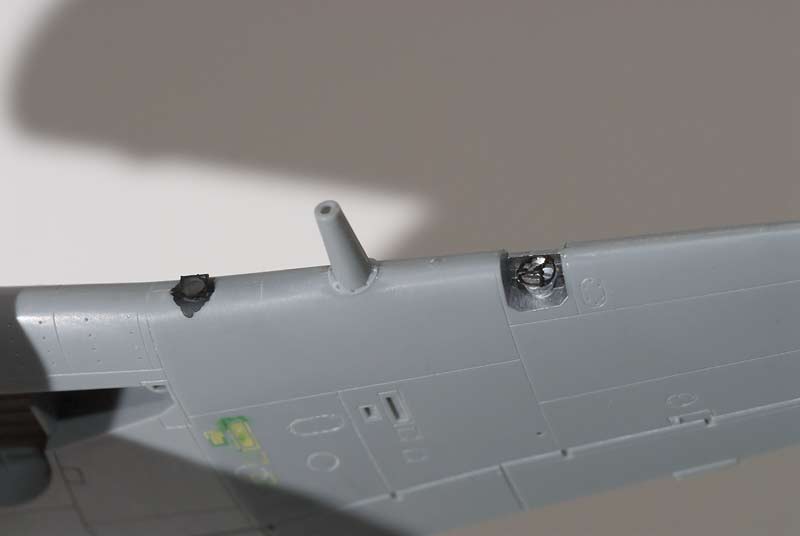
You can also see the leading edge camera aperture (20" lens equipped F.24 camera, behind a 5" square glass registration plate). Also note the three scribed panels where the original 3 F.24 cameras locations were covered.
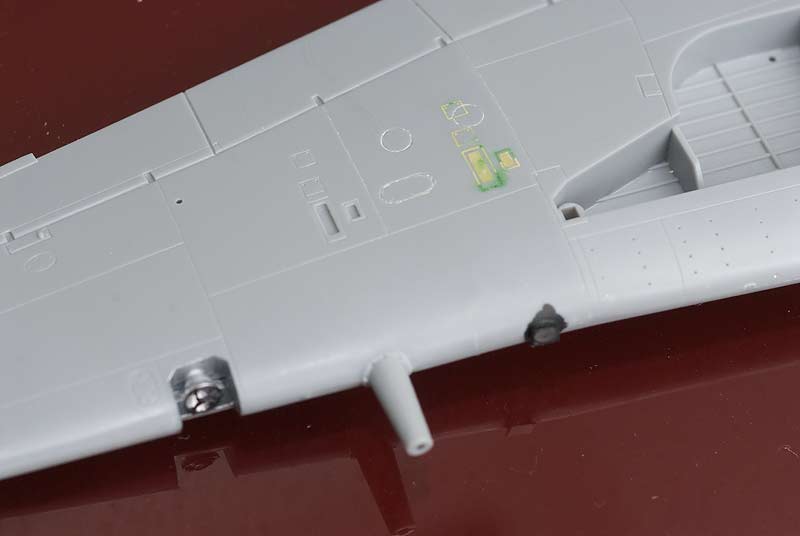
Another view of the scribing- done using a needle, then sanded, then cleaned out using a sharpened piece of sprue– this cannot scratch the surrounding plastic if you slip. The circles were done with a frame hanger's nail hole as a template, and the rounded rectangle was done with the hole in a modelling knife blade.
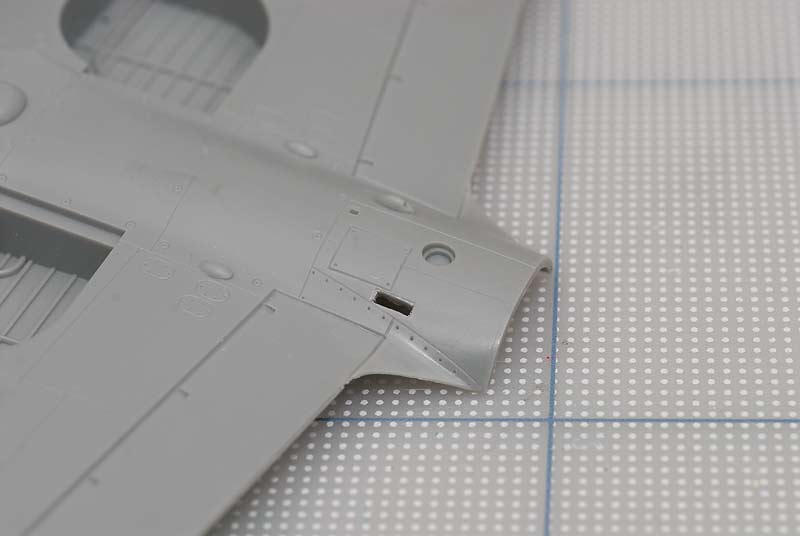
Foot stirrup hole in lower fuselage opened.
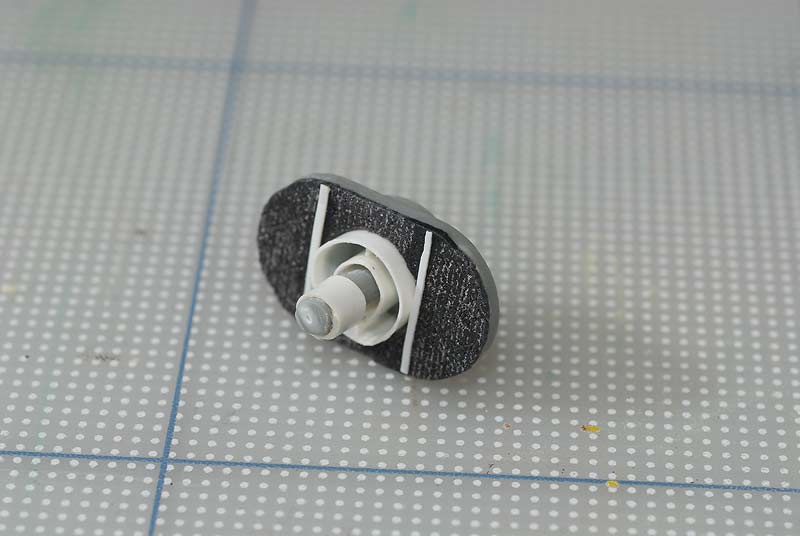
New radiator front scratch-built (texture from an old black T-shirt soaked in superglue– take care the fumes are bad for you, particularly your eyes). The central part will form the base for the the 'cuckoo-door' air filter, to be fitted after most of the painting is done.

Cockpit almost out of the box (seat thinned on all sides, height reduced a bit to allow us to see the scratch-built bar over which the shoulder straps run. Headrest armour thinned down (this also removes a sink mark). Padded seat back added (geeky detail: the diamonds on this are taller than wide, MDC's 1/32 seat has them incorrectly wider than tall).




